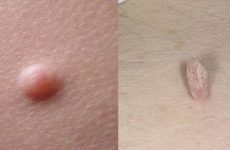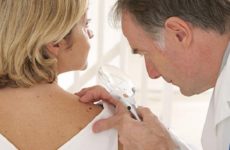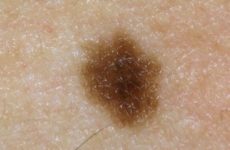Содержание:
Introduction
HPV (human papillomavirus) is widespread among the world’s population. The causative agent includes 5 genera, about 43 species and over 170 types.
When infected, a sick person does not have any symptoms, so he does not suspect that the virus has entered the body and multiplies intensively.

Are HPVs transmitted from person to person?
The causative agent of papillomatosis is transmitted from an infected person to a healthy one. Infection can occur in several ways.
From a man
In the female body, HPV penetrates through the smallest cracks in the skin and the uterine neck. It usually affects the body during sexual activity.
A man transmits the virus by any means of sex:
- vaginal;
- oral;
- anal.
In addition, a woman can catch HPV by rubbing her genitals against each other.
A separate category of patients are homosexuals. They are at risk because they become infected during anal sex. Moreover, they will have formations not only on the penis , but also in the perianal region.
From a woman
A man can also become infected through any kind of sexual intercourse: oral, vaginal, anal. When the genital organs are rubbed, the pathogen is able to penetrate the body through microcracks.
Methods of infection from humans
Doctors identify several ways HPV can be transmitted. These include:
- sexual;
- vertical;
- contact;
- domestic;
- autoinfection.
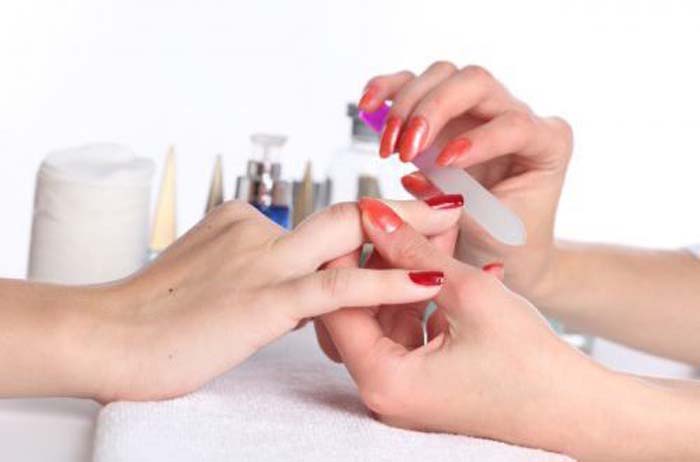
Sexual and contact routes of transmission
These are the most common ways of infection with the human papillomavirus. the pathogen enters the body through microcracks on the skin or mucous membranes of organs. Moreover, the infection does not depend on the type of sex at all: oral, vaginal or anal.
Even when partners use non-contact proximity and rub their genitals against each other, infection can occur. If there are papillomas on the oral mucosa, HPV transmission occurs through kissing or oral intercourse. Usually, oncogenic types of the virus are transmitted precisely through sexual contact.
The risk group for infection with papillomatosis:
- persons who have many sexual partners, especially those who do not use barrier contraceptives;
- homosexuals;
- adolescents who have begun to have sex.
perinatal way
When a sick woman carries or gives birth to a child, she can infect him with the human papillomavirus. Usually, HPV transmission occurs during the passage of the baby through the genital tract of the expectant mother.
As a result, the newborn has papillomas and condylomas in the pharynx and larynx. They interfere with the normal breathing of the crumbs.
The child can also become infected when breastfeeding. The baby has formations in the oral cavity and pharynx.

Other transfer methods
There are other ways to get HPV. However, they are not as common as the methods described above. Also find out what indirect signs will help you identify HPV.
Domestic transmission of the virus
This type of infection is recorded in extremely rare cases, since the human papillomavirus is unable to survive in the environment for a long time. It needs a host to live and reproduce.
The pathogen is transmitted when a healthy person uses the patient’s household or personal hygiene items: cutlery, razor, towel, washcloths, cosmetics. Even if a person wears the clothes of an infected person, the disease can develop. An important condition is that there must be damage on the skin of the new carrier.
Autoinfection
This method is possible when shaving, cutting nails or epilating. A sick person by such actions spreads the infection throughout his body.
Children who develop papillomas often rip off neoplasms. So they transfer HPV to undamaged areas of the body and increase the area of damage.
Many people are interested in whether the virus can be transmitted by airborne droplets. Doctors answer this question in the affirmative. Although this method is extremely rare.
Medical workers are at risk. They can become infected during surgery.
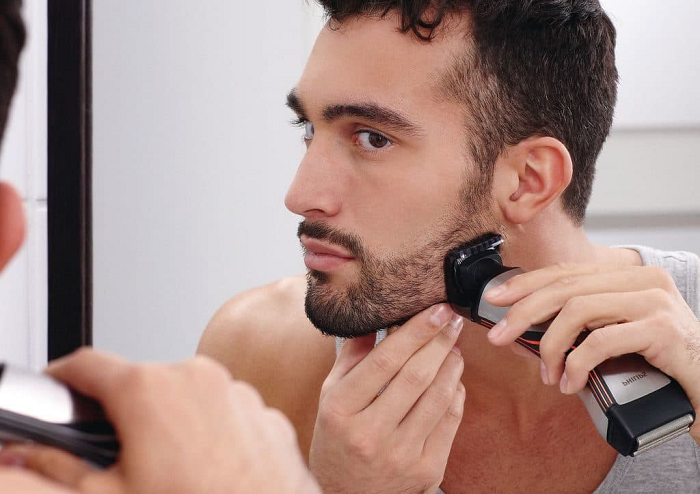
The likelihood of infection and oncogenicity of the virus
Experts say that the highest risk of infection in persons during sexual intercourse. Moreover, with unprotected sex, this probability is about 90%. The threat of infection increases in the presence of provoking factors:
- A sharp decrease in immunity. When a person is sick with colds, his antiviral protection is not able to cope with the increased load.
- Dysbacteriosis of the intestine or vagina. With such diseases, the death of beneficial microflora occurs. The papilloma virus will multiply intensively in the cells.
- Concomitant venereal diseases. If the patient already suffers from gonorrhea, syphilis, trichomoniasis and other sexual infections, the risk of infection with pointed papillomas increases many times over.
- Exacerbation of a chronic disease. The recurrence of the disease is a favorable condition for human infection.
- Stress and depression. It is known that such conditions cause a decrease in antiviral protection. The human papillomavirus easily penetrates into the cell.
- Presence of bad habits (smoking).
- Taking combined oral contraceptives.
Doctors distinguish several groups of human papillomavirus:
- Non-oncogenic. If the patient is exposed during the diagnosis of types 1, 2, 3, 4, 5, then the development of a malignant tumor will not occur from them. However, one should not forget that in the absence of measures, one can become infected with oncogenic strains.
- With a low degree of carcinogenicity. This group includes HPV 6, 11, 42, 43, 44. If any provoking factors appear, the human papillomavirus can cause cellular mutations. As a result, this can lead to malignancy of neoplasms.
- Dangerous – have a high carcinogenic risk.

These include types 16, 18, 31 , 33, 35, 45, 51,56, 59 , 66 , 68. When such strains are activated in the body, precancerous diseases occur. If the patient does not treat them properly, the neoplasms turn into oncological pathology. The most dangerous consequences are cancer of the cervix and mammary glands, a malignant tumor of the anus, and the bladder.
Is it possible to infect a partner after treatment?
To cope with papillomas, doctors prescribe a complex of therapeutic measures to patients. With a pronounced course, the patient undergoes antiviral and immunostimulating therapy. Surgery is used to remove genital warts.
Drug treatment includes the use of medications such as Interferon, Cycloferon , Allokin Alpha. They suppress the activity of the human papillomavirus and normalize the body’s natural defenses.
External manifestations of the disease are eliminated by destructive chemicals, keratolytics or hardware. When removing growths, the wound should be treated with antiseptic solutions (Miramistin, Chlorhexidine) so as not to provoke the attachment of pathogenic bacteria.
Human papillomavirus refers to pathogens that persist in the human body even during therapy. There is no permanent immunity to HPV. However, this does not mean at all that the disease does not need to be treated. Properly selected therapy can suppress the manifestations of an infectious disease.
The causative agent of the disease goes into a latent state. It is not able to multiply and cause a clinical picture of the disease. That is why, after the treatment, the patient becomes non-infectious for other people even during sexual contact.
An important condition for a patient who has undergone an active phase of papillomatous infection is to prevent the virus from reactivating. For this, it is necessary to observe a set of measures that prevent exacerbations.

Precautions to avoid infection
Even though HPV is quite easy to catch, there are ways to protect yourself from the pathogen. There are a number of preventive measures that can protect a person from contracting the human papillomavirus and other sexually transmitted diseases.
What do we have to do:
- Have one proven sexual partner. Even a condom cannot protect a person from infection by 100%.
- After protected or unprotected sexual intercourse with an unverified partner, it is necessary to conduct thorough intimate hygiene using antiseptic solutions.
- Begin sexual activity no earlier than 18 years of age. The fact is that in adolescents a protective vaginal layer is formed. Any infection during sexual intercourse can quickly enter the body.
- Regularly undergo a medical examination by specialists: for women, a gynecologist, for men, a urologist. At the initial stages of the development of papillomatous infection, it is easier to prevent the spread of the disease.
- If a pregnant woman has growths on her genitals caused by HPV, a caesarean section should be performed during delivery. This method will protect the newborn from infection.
- Get vaccinated against HPV. Scientists have developed a special vaccine that protects against infection. It is recommended primarily to women and teenagers. Even when a carrier of the human papillomavirus is vaccinated, the agent improves its immunity and transfers the pathogen into a latent phase.
General preventive measures:
- Immediately treat any, even the most minor damage to the skin or mucous membranes with antiseptic solutions.
- Use only personal hygiene products.
- In saunas, public baths or swimming pools, wear rubber slippers.
- Strengthen immunity by hardening, frequent walks in the fresh air, proper nutrition.
- To refuse from bad habits.
- Observe the sleep and nutrition regimen.
- Exercise regularly.
- Treat acute and recurrent chronic diseases with a doctor.
Conclusion
The human papillomavirus is highly infectious. You can get it in several ways, including sexual and contact. In addition, some types of infectious agent are dangerous for malignancy.
To prevent this disease in yourself, you must follow preventive measures. One of the most effective ways is vaccination.




